“Passive House” design guidelines define high-performance buildings through the super tight, sealed envelope. Do buildings have to be closed systems in order to be energy efficient? Can we design high-performance buildings based on more dynamic, open systems? This thesis proposes a campus high-rise building that uses semi-conditioned collective spaces as thermal buffer zone to mitigate indoor and outdoor climates. It projects a scenario where the enchanted vegetated space of a conservatory helps in the exchange of available energy to support the activities of its occupants -- humans and plants. This building explores the symbiotic relationship between architecture and energy. It questions the separation of structure, material, and infrastructure currently represented by the closed building system with air based heating methods.


The conservatory plays a key role as an environmental control apparatus in this project. It is able to harness solar energy from the sun, allow natural light to enter the space, and provide a well-oxygenated environment that is necessary for the well-being of the occupants. Based on their climate data and environmental properties, each greenhouse is paired with a specific program either because of their shared ideal micro-climate or because one space can take advantage of the energy transfer from the other space.


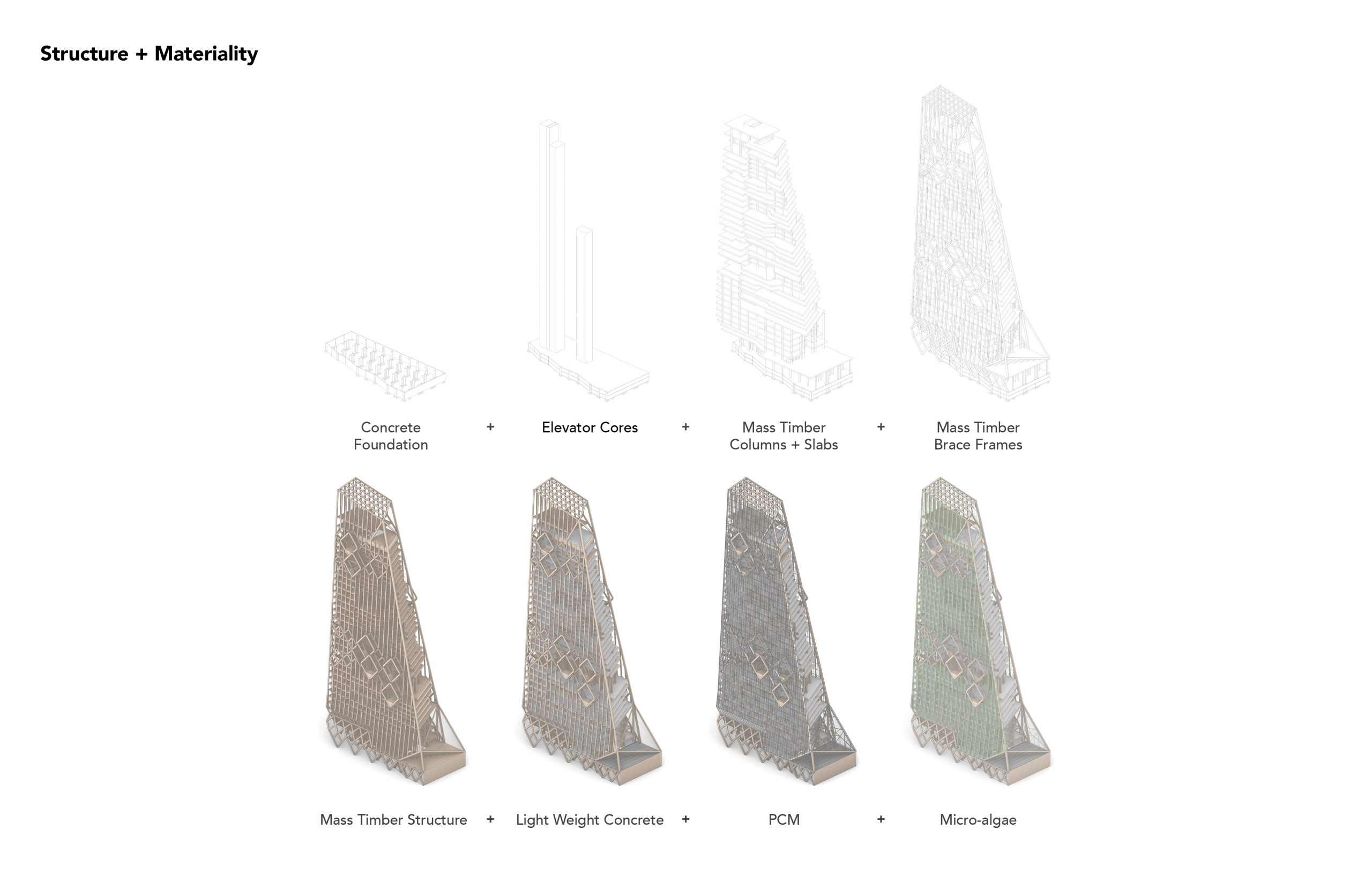
The mass timber structure of the proposed building will sequester over 56,000 metric ton of CO2. Thermodynamic materials like light weight concrete, phase change materials (PCM), and micro-algae have superior thermal capacity, which will reduce the amount of heat loss through the building envelope, therefore reduce the energy consumption of the building. In addition, the micro algae encapsulated in the facade system can generate heat, reduce CO2 emissions, and supply ample oxygen for the occupants.


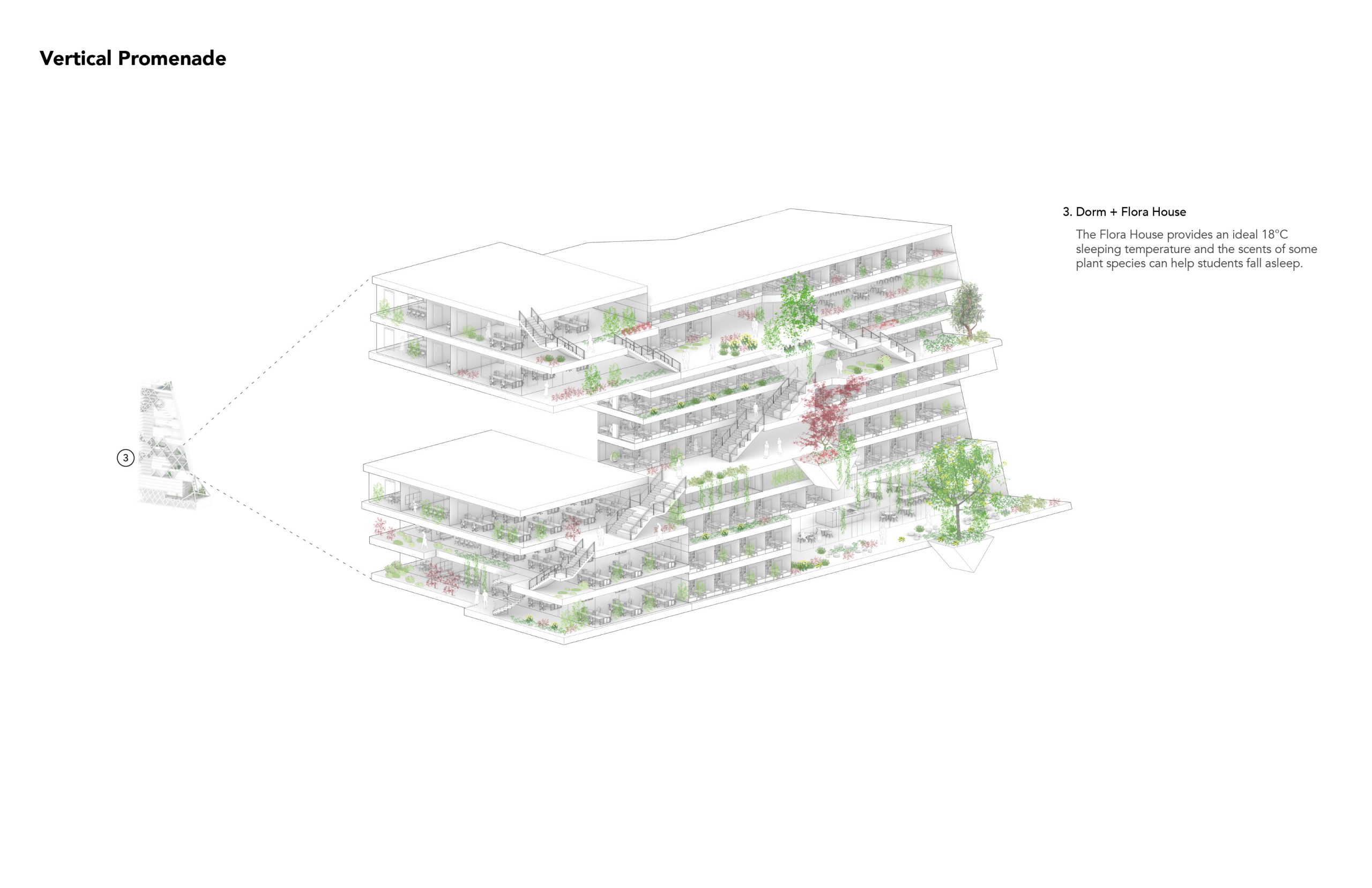

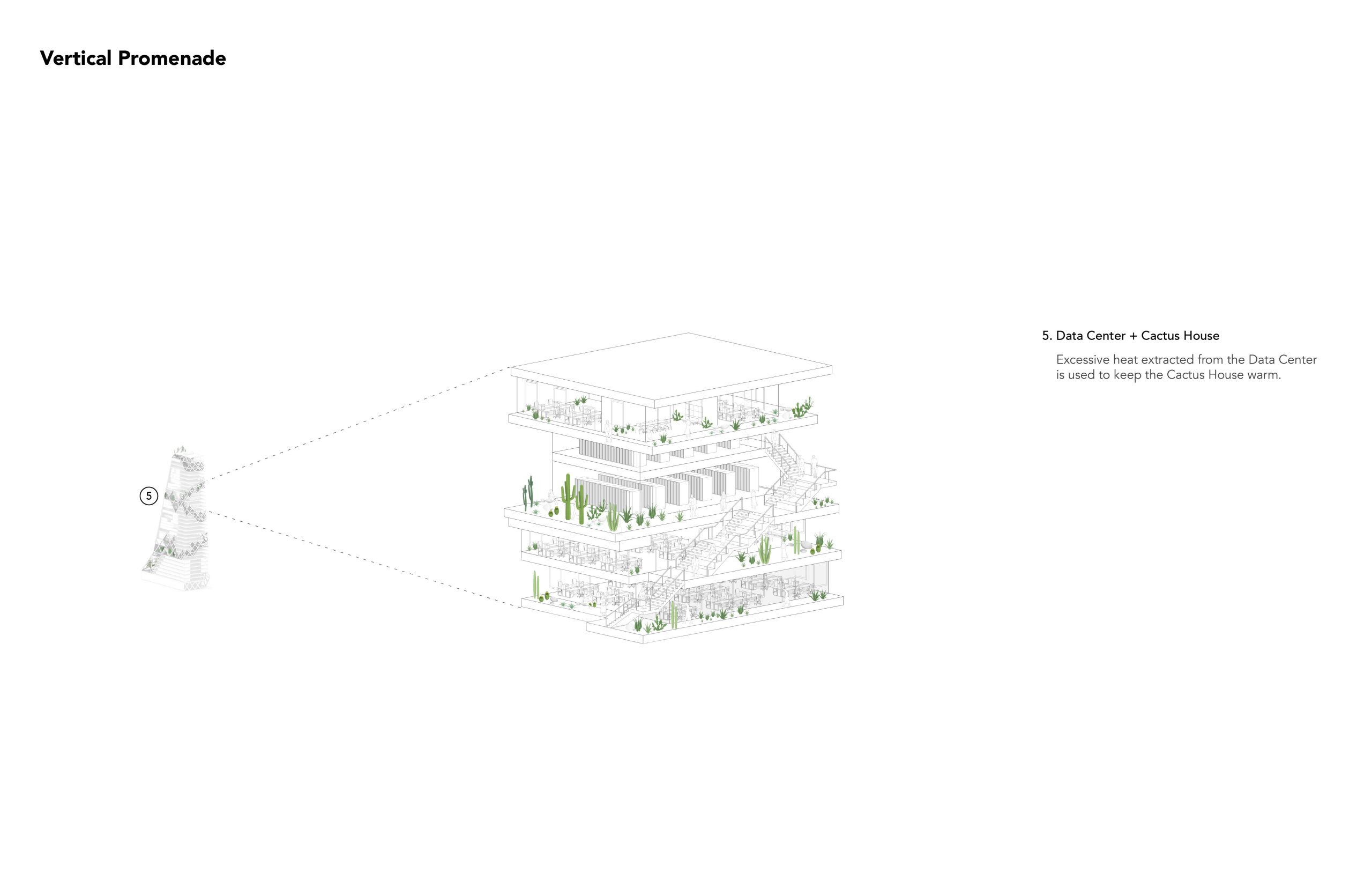
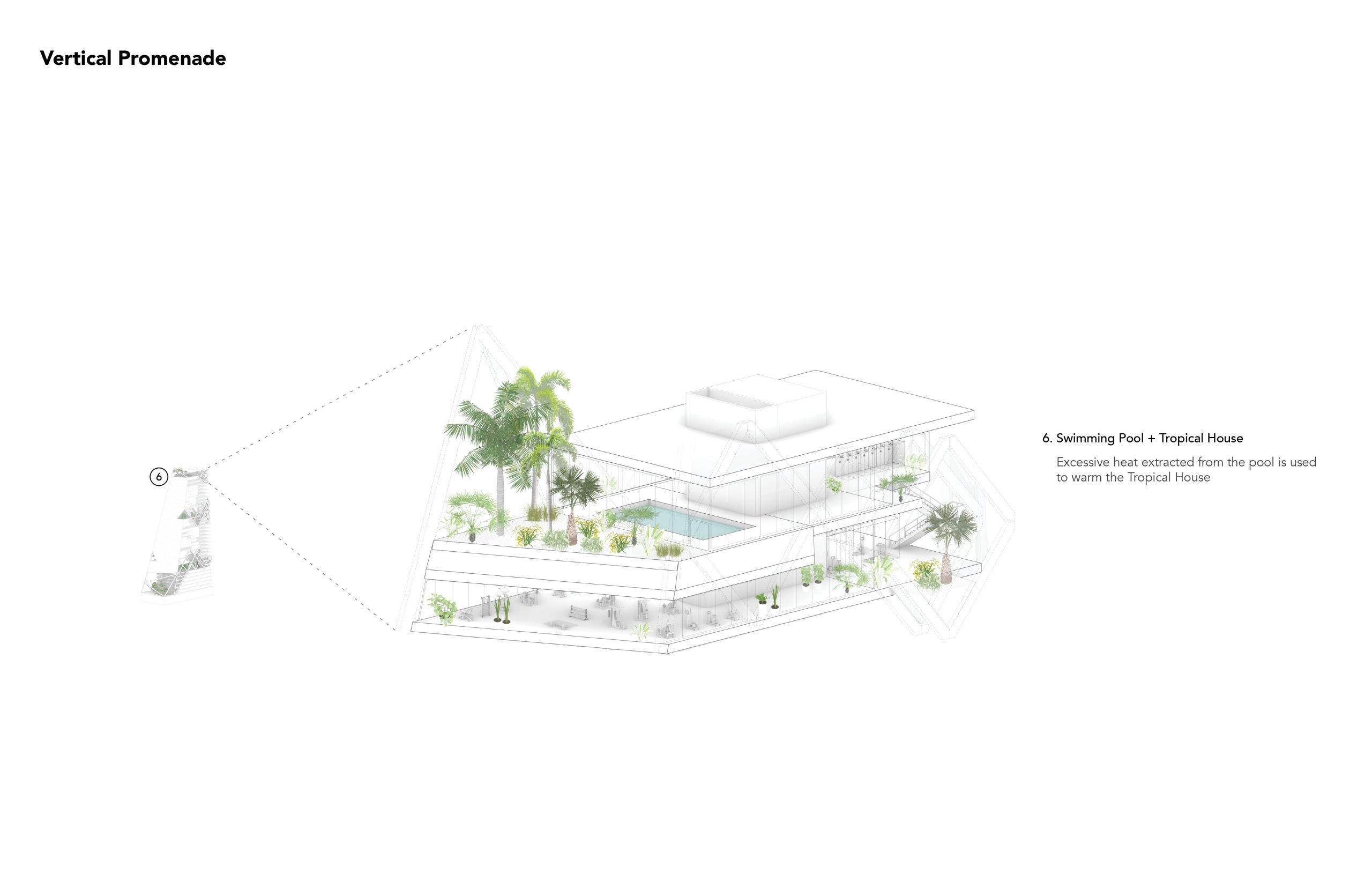
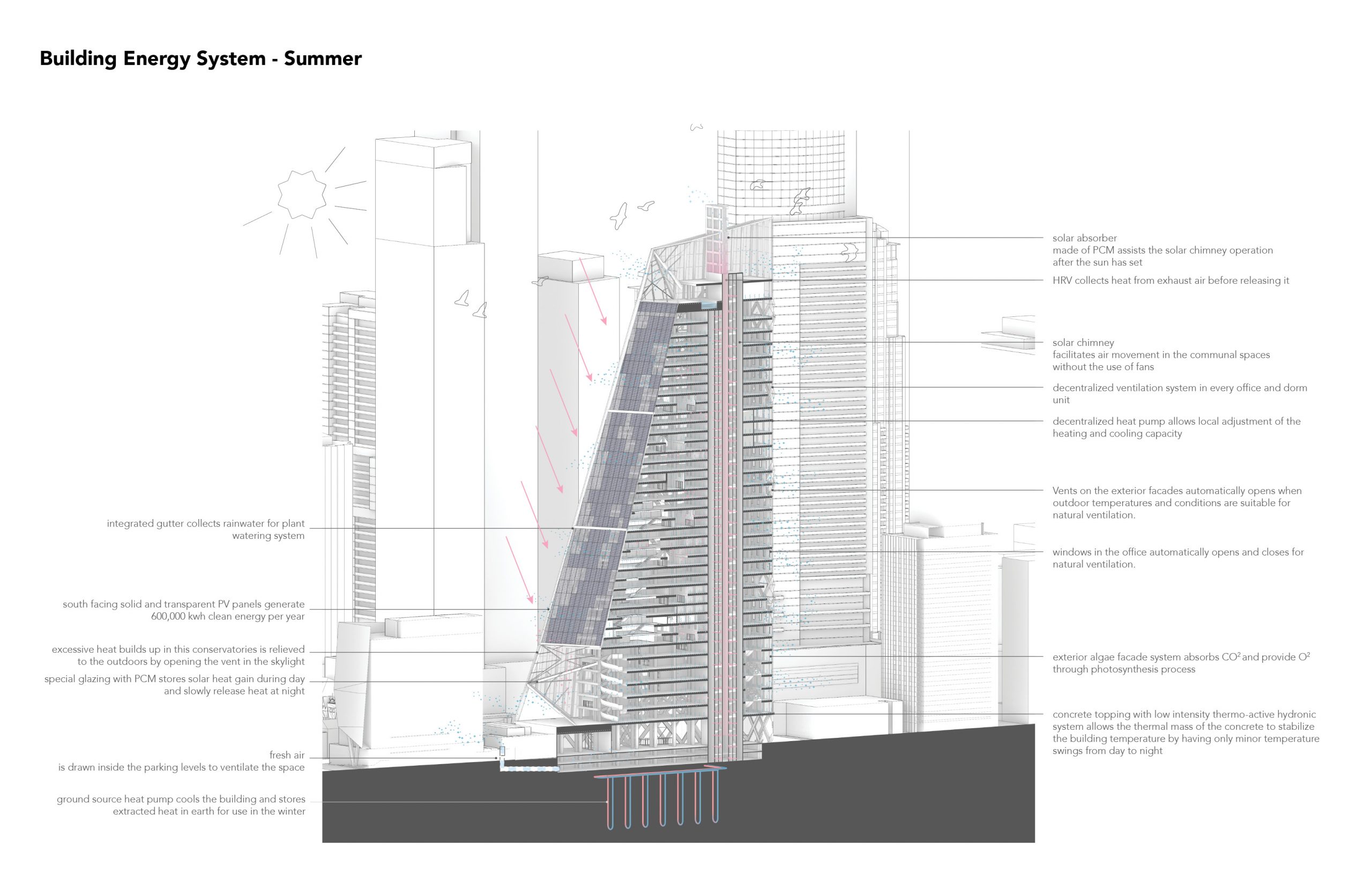

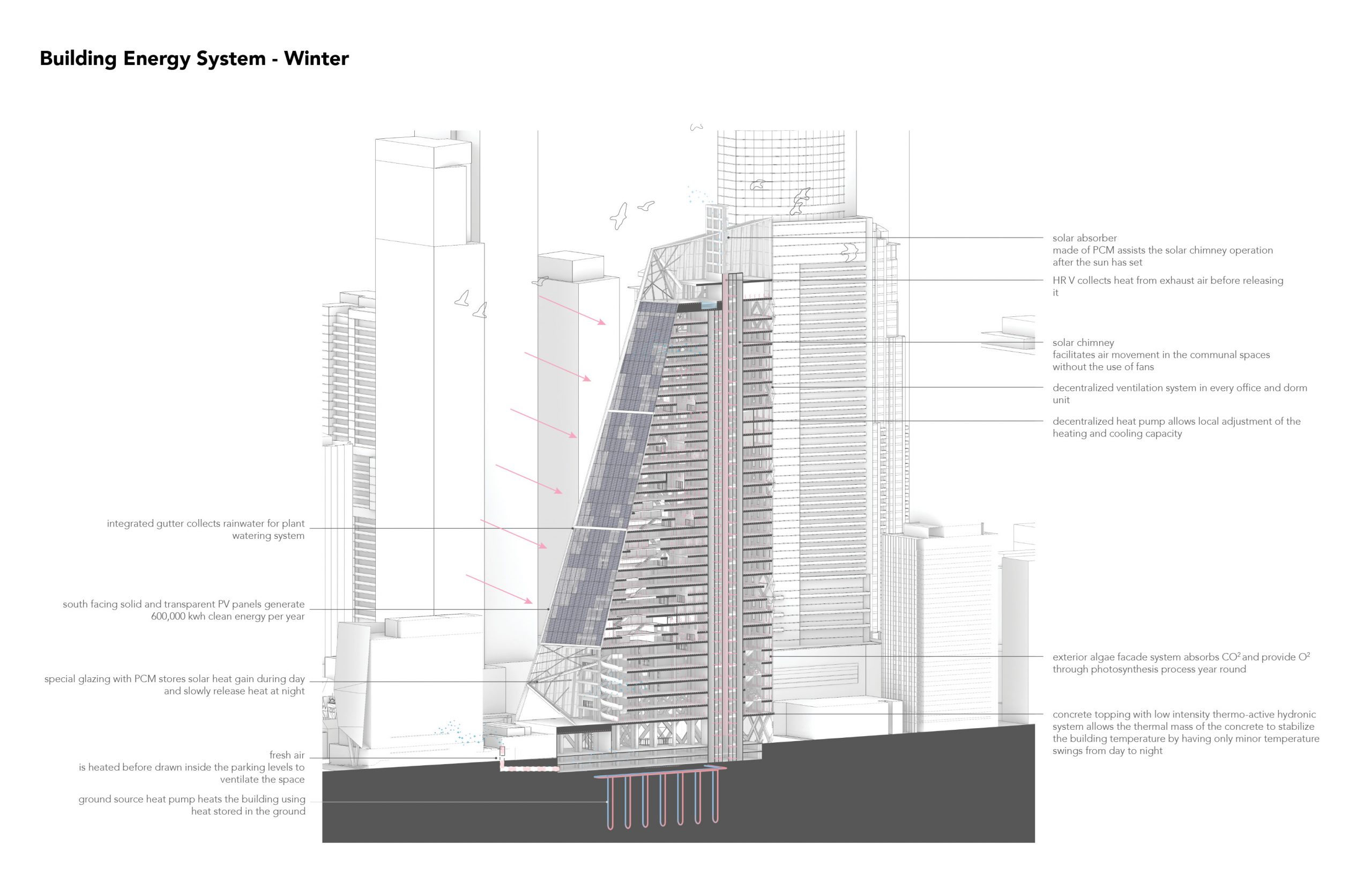


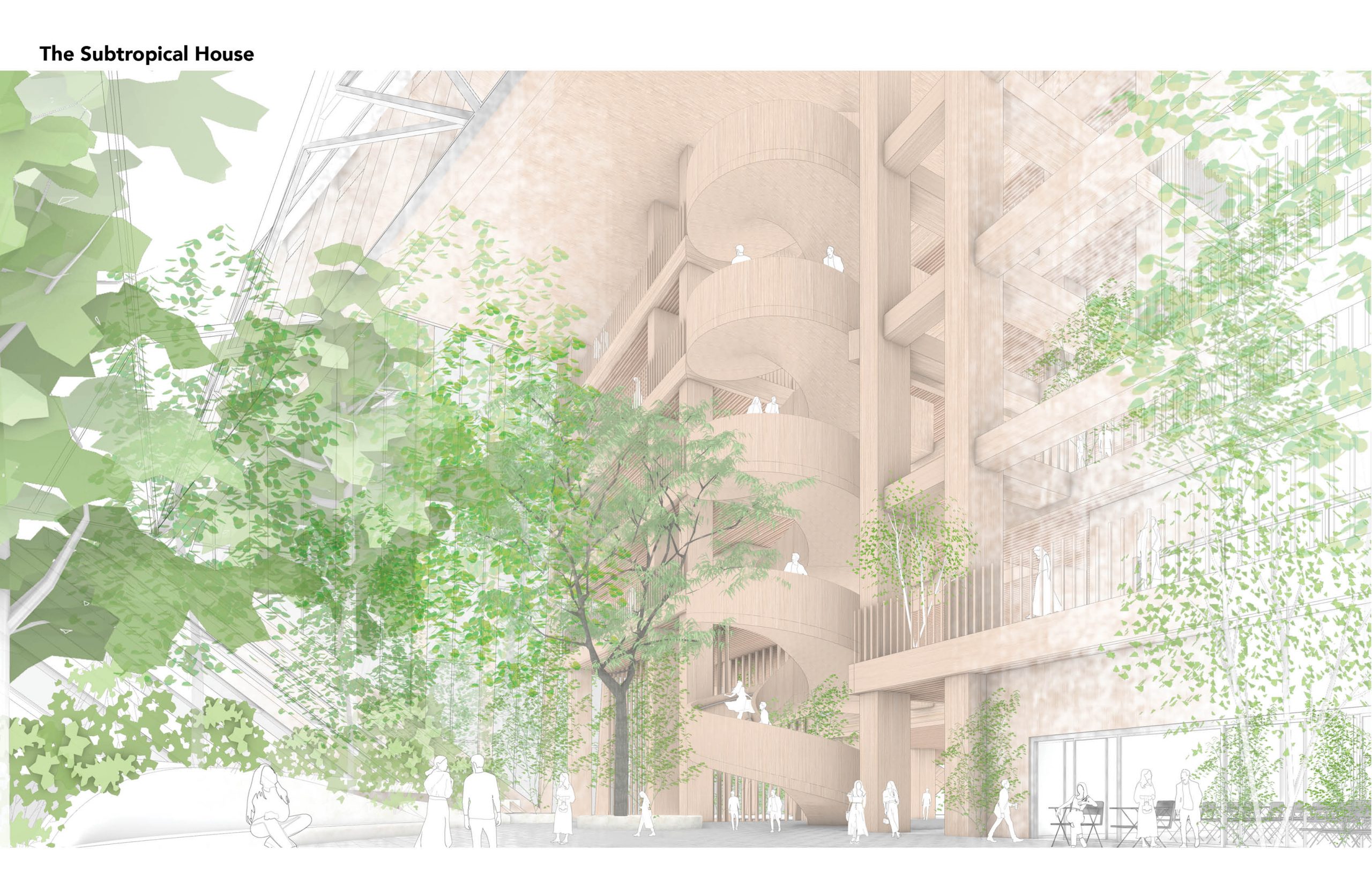


The layers of the building interact with one another and the external environment. The conservatories form a connected vertical promenade that wraps around the building, as if the vegetations eventually take over. This semi-conditioned collective space functions as a thermal buffer zone that mitigates indoor and outdoor climates. It allows for an atmospheric, or experiential and palpable exchange between inhabitant, energy and space.

